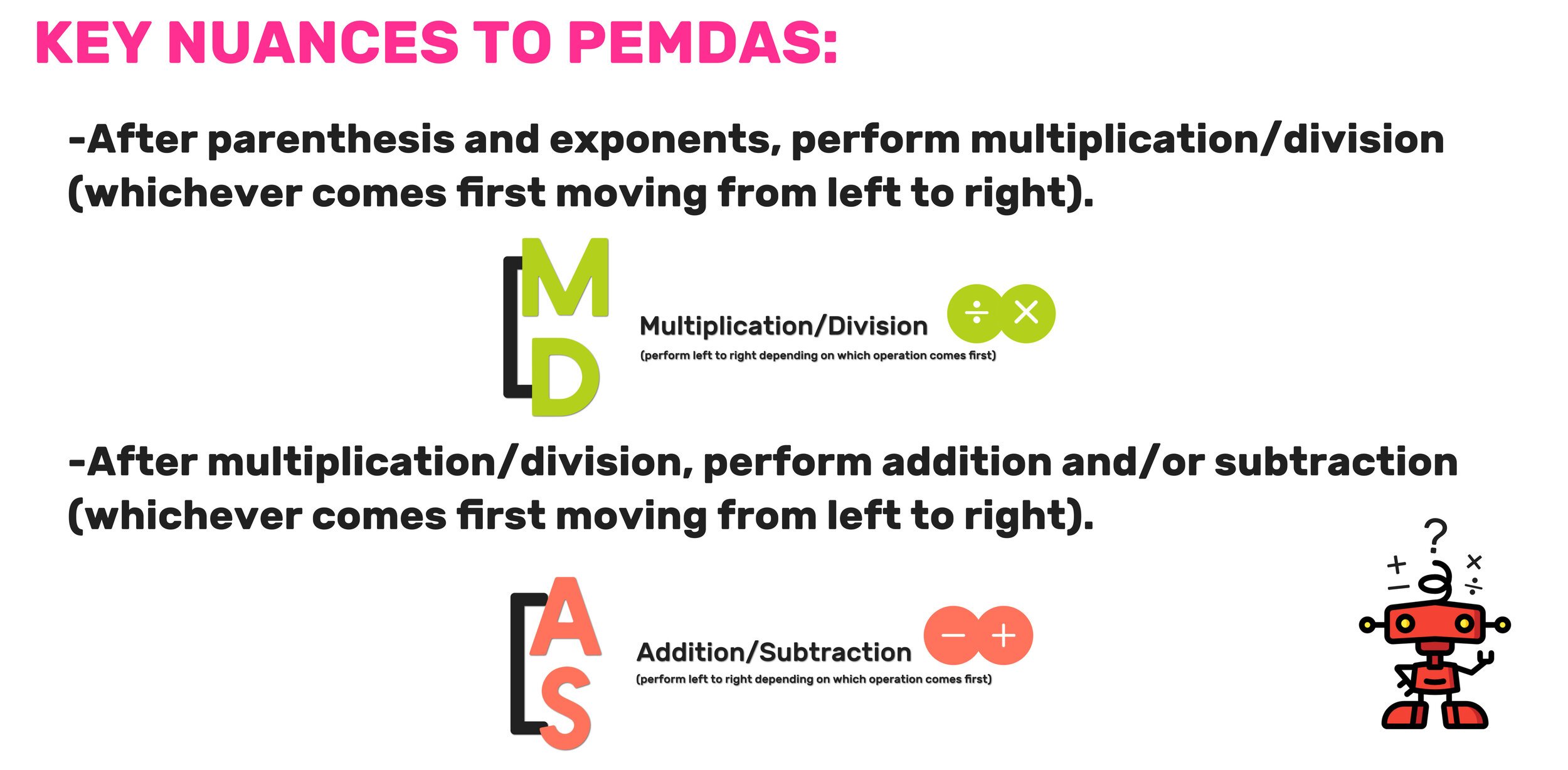Order of Operations Worksheet Library
Download your Free Order of Operations Math Worksheets and Answer Keys
Looking for effective and engaging Order of Operations Math Worksheets to share with your students at home or in your classroom?
Below you will find an awesome collection of free topic-specific worksheets for students in grades 3-8+. Each order of operations worksheet includes a complete answer key and can be downloaded as a pdf file that is easy to print and share.
To download any of the order of operations worksheets below, simply click any of the blue text links to preview and download each order of operations worksheet.
And, if you would like a quick review of the order of operations, there is a recap section below the worksheets that you can reference.
Each order of operations worksheet is a sample from the Mashup Math Topic-Specific Worksheet Libraries available on our website. | Quick Links: How to Download/Print
Order of Operations Worksheet Previews and Download Links
Adding/Subtracting (w/ Parentheses)
Click Image to Preview
▶️ Adding/Subtracting 3 numbers (w/ parenthesis) (A)
▶️ Adding/Subtracting 3 numbers (w/ parenthesis) (B)
▶️ Adding/Subtracting 4 numbers (w/ parenthesis) (A)
▶️ Adding/Subtracting 4 numbers (w/ parenthesis) (B)
▶️ Adding/Subtracting 5 numbers (w/ parenthesis) (A)
▶️ Adding/Subtracting 5 numbers (w/ parenthesis) (B)
Mixed Operations
Click Image to Preview
▶️ Adding/Subtracting/Multiply (no parenthesis) (3-4 numbers)
▶️ Adding/Subtracting/Multiply (w/parenthesis) (3-4 numbers)
▶️ Adding/Subtracting/Multiply (no parenthesis) (5-6 numbers)
▶️ Adding/Subtracting/Multiply (w/parenthesis) (5-6 numbers)
▶️ Extra practice (order of operations up to 6 terms) (A)
Advanced Order of Operations
Click Image to Preview
▶️ Practice: Order of Operations with Exponents (A)
▶️ Practice: Order of Operations with Exponents (B)
▶️ Practice: Order of Operations with Exponents (C)
▶️ Practice: Order of Operations with Exponents (D)
▶️ Practice: Order of Operations with Nested Parenthesis (A)
▶️ Practice: Order of Operations with Nested Parenthesis (B)
▶️ Practice: Order of Operations with Nested Parenthesis (C)
🛑 WAIT! Do You Want More FREE Math Worksheets and Answer Keys?
If so, check out Free Math Worksheets Library, where you will find hundreds of topic-specific practice worksheets with complete answer keys!
The Order of Operations: Review
Do you need a quick recap of the order of operations and how to correctly apply them when solving math problems?
In math, the order of operations is a set of rules that you must following whenever you are solving a problem that has multiple terms and operations, including:
Addition
Subtraction
Multiplication
Division
Groupings/Brackets/Parentheses
Exponents
While almost every student learns the mnemonic PEMDAS (which is often represented using the expression Please Excuse My Dear Aunt Sally) to remember these operations and their order.
However, memorizing this mnemonic and what each letter stands for is actually a poor strategy when it comes to learning to correctly apply the order of operations. Why? Because relying on the oversimplified memory trick that is PEMDAS will often lead to you ending up with incorrect answers because math operations are not always directly performed when left to right.
In fact, the order of operations have specific rules that must be followed, namely the relationships between multiplying/dividing and adding/subtracting.
Order of Operations Worksheet Advice: Relying on the PEMDAS mnemonic may be a poor strategy for understanding the order of operations and how to correctly apply them.
While using PEMDAS can be a helpful way to remember all of the operations, it is important that you understand and remember a few key nuances related to PEMDAS and the order of operations:
Key Nuances to PEMDAS and the Order of Operations:
P: Perform operations inside of parenthesis or brackets first (if there are none, you can skip this step).
E: Next, move onto applying any exponents (if there are none, you can skip this step).
M/D: Perform multiplication/division from left to right. There are many cases where you will have to perform division before multiplication!
A/S: Finally, perform addition/subtraction from left to right. There are many cases where you will have to perform subtraction before division!
For example, consider the problem 56 ÷ 7 x 2.
In this problem, we have two operations—division and multiplication. In this case, we have to remember that the order of operations calls for use to perform multiplication/division from left to right as follows:
56 ÷ 7 x 2
8 x 2
16
The solution is 16. However, had you believed that PEMDAS requires you to perform multiplication first and division second, you would have likely come to the incorrect solution that the answer is 4. If this example was a multiple choice problem, one of the choices, of course, would be 16, but another choice would likely be 4.
Order of Operations Worksheet: Make sure that you understand the key nuances to PEMDAS if you plan on using it to help you to remember how to correctly apply the order of operations.
If you want to be able to consistently solve math problems involving multiple operations, then you will need to have a strong understand of the order of operations.
PEMDAS can be an effective tool for remembering how to apply the order of operations, as long as you remember the key nuances mentioned above (namely the relationships between performing multiplication/division and/or addition/subtraction in order from left to right).
If you want to learn more about PEMDAS and the order of operations and work through more step-by-step practice problems, click here to access our free guide: The PEMDAS Meaning Explained with Examples.
Once you understand how to correctly apply the Order of Operations, you can strengthen and solidify your understanding through practice. We highly recommend downloading and working through an order of operations worksheet from the collection above that is appropriately challenging for your grade and skill-level.
Each order of operations worksheet includes an answer key so you may check your work and assess your own understanding. If you find that you are solving most of the problems correctly, then you will likely want to try a more advanced worksheet. However, if you are struggling, you should spend some time reviewing the order of operations before moving on.







